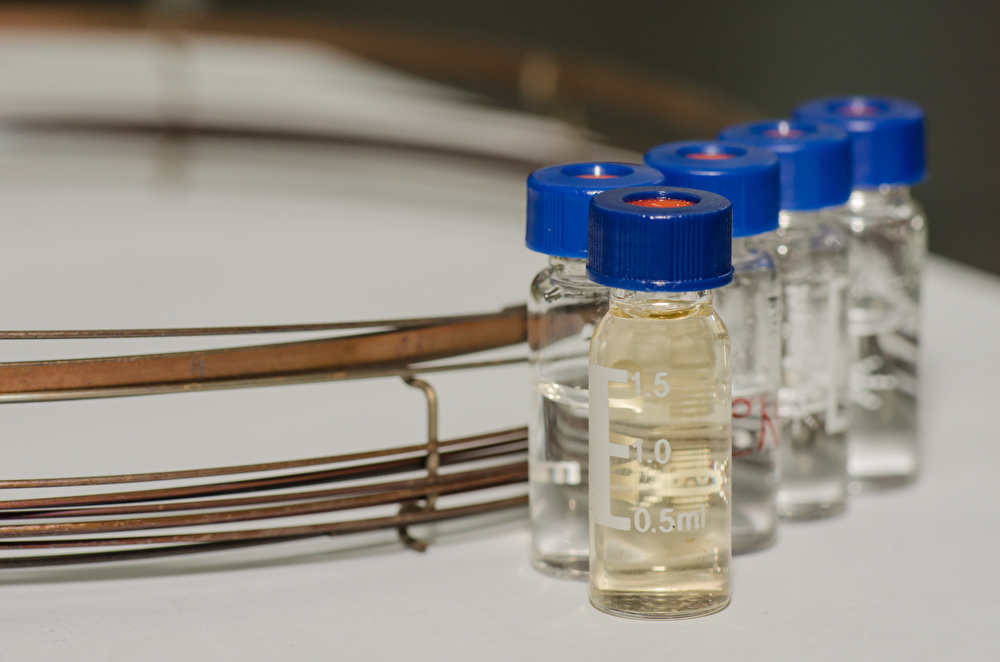Quantifiability of semi-quantitative GC/MS
What does the term “semi-quantitative” mean?
Semiquantitative analyses do not provide exact concentration data, but rather estimate the quantity ratios of the detected substances. This process is based on the comparison of the signal intensities of the unknown substances with those of standard substances. The method proves to be particularly useful when it comes to identifying a large number of substances in a sample and determining their relative quantities.
Use in non-target screening:
In non-target screening, samples are tested for a wide range of possible impurities without specifying in advance which substances are expected. This is particularly relevant for chemical characterization in accordance with ISO 10993-18, which requires a comprehensive assessment of the chemical composition of medical devices.
Quantifiability of semi-quantitative GC/MS
Although semi-quantitative GC/MS does not provide exact concentrations, it still provides valuable information:
- Relative quantity determination: by comparing the signal intensities, relative quantity ratios of the substances can be determined. This is particularly useful for identifying major and minor components.
- Screening for impurities: The method enables the detection and rough quantification of impurities that may be present in the samples. This is crucial for assessing the safety and biocompatibility of medical devices.
- Comparative analysis: Semi-quantitative analysis allows different samples to be compared with each other to identify differences in chemical composition.
The limitations of semi-quantitative GC/MS
The accuracy of the quantification depends heavily on the availability of suitable standard substances and the calibration of the system. In addition, substances with similar chemical properties can be difficult to distinguish.
- Accuracy and precision: Semi-quantitative analysis only provides estimates of concentrations, which can lead to inaccuracies. Precision is highly dependent on the availability and quality of the standard substances.
- Matrix effects: The sample matrix can influence the sensitivity and accuracy of the method. Matrix effects can lead to signal suppression or amplification, which makes quantification more difficult.
- Complexity of sample preparation: Sample preparation can be time consuming and complex. Different sample types require specific preparation methods to achieve reliable results.
- Limited identification capabilities: The method may have difficulty distinguishing substances with similar chemical properties. This can lead to misidentification or inaccurate quantification.
- Sensitivity: Although the method is sensitive, it can reach its limits at very low concentrations. The detection limit depends on the efficiency of the ionization source and the detection method.
Conclusion
Semi-quantitative GC/MS is a powerful tool in non-target screening and provides valuable insights into the chemical composition of samples. Despite its limitations, it provides important information that can contribute to the assessment of the safety and quality of medical devices according to ISO 10993-18.
Newsletter registration




